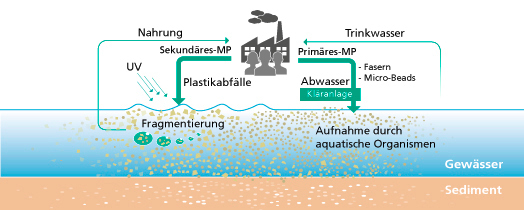Background: Microplastics in public debate

Headlines like »Microplastics overburden wastewater treatment plants«[1], »Plastic particles found in food«[2], and »Tiny plastic particles contaminate drinking water«[3] show that the discussion about microplastics pollution is becoming increasingly important in the public debate. A definition of microplastics is given in the box on the bottom of this web page. There is a strong need for scientific research on this topic in order to avoid possible misleading conclusions based on speculations and unproven assumptions due to the lack of information and knowledge.
In the opinion of Fraunhofer UMSICHT, it is imperative to intensify the scientific research on the issue of microplastics. The growing amount of microplastics in the aquatic environment due to increasing plastic production and unregulated disposal can turn into a serious problem for mankind and nature. This issue requires an early development of sustainable solutions.
[1] Spiegel online Wissenschaft: »Schadstoffe: Mikroplastik überfordert Kläranlagen«, October 2014
[2] NDR, »Markt«: »Plastikteilchen in Lebensmitteln gefunden«, July 2014
[3] Die Welt online: »Winzige Plastikteilchen verunreinigen Trinkwasser«, September 2013
 Fraunhofer Institute for Environmental, Safety and Energy Technology UMSICHT
Fraunhofer Institute for Environmental, Safety and Energy Technology UMSICHT